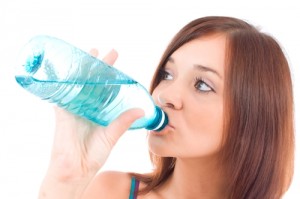
When businesses evaluate packaging solutions, there are a number of factors that are considered. For instance, the durability of the product, its ability to take on various forms and its cost are all among some of the elements of a material most often considered. However, consumer preferences are changing, and with them, the ways in which companies should package their products.
Evidence of the green movement can be seen in many facets of the market. From the goods that consumers purchase to the companies they choose to do business with, consumers are increasingly putting an emphasis on the carbon footprint of a business. In order to keep up with customer demands, major names such as McDonalds, hailed as "the world's leading global food service retailer," are looking for ways to incorporate 100% sustainable products in their business goals.
PET recycling continues to trend up!
One way in which much of the food and beverage industry has been able to address sustainability is through the use of PET bottles. Consuming beverages in bottle containers is most common due to convenience. Unfortunately, this can also lead to increased waste.
According to a recent report from the Association of Postconsumer Plastic Recyclers and the American Chemistry Council, the rate at which people recycle these containers grew by 1.6 percent during 2012. This brings the total rate to 30.5 percent on the year, and marks the 23rd consecutive year in which recycling has increased for these products.
"We are very encouraged by the steady growth in plastic bottle recycling," said APR Executive Director, Steve Alexander. "Used plastics are valuable materials, and recyclers rely on all of us to make sure these resources make it into a recycling bin."
Together, polyethylene terephthalate (PET, #1) and HDPE bottles continue to make up over 96 percent of the U.S. market for plastic bottles with polypropylene bottles comprising half of the remaining 4 percent.
According to the findings, recycling of high-density bottles (or HDPE), such as milk jugs and detergent bottles, also increased by 43.5 million pounds to reach 1 billion pounds.
Bottles composed of other materials such as polyproplyene also saw rates increase. Domestic recycled PP grew by 47 million pounds, marking an annual increase of 7.2 percent.
Alexander and Russell offered three simple tips to help consumers recycle more of their plastic bottles:
- Find a recycle bin to return your plastic bottle to.
- All plastic bottles are welcomed, regardless of the type.
- Don’t forget about caps!
PE vs PP? Which is better?
This is certainly encouraging news for the environment, but also presents an important decision for suppliers when they are selecting materials for their packaging operations. When it comes to bagging and bottling, both PE and PP are viable solutions so it is important to consider the benefits of each.
PE has higher purity levels, is soft, pliable and also durable, which can be an added benefit for vessels containing heavy objects. On the other hand, PP is a stiffer and harder plastic, with a clearer display making is a strong solution for the presentation of certain objects.










